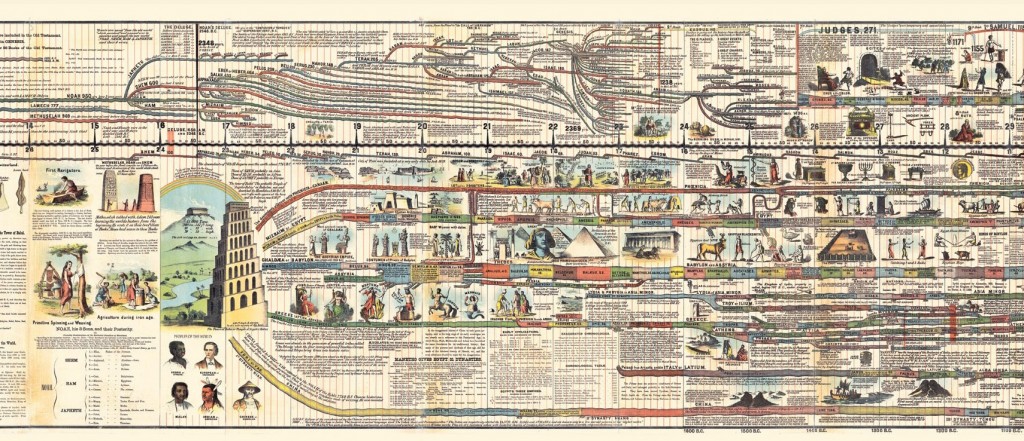This is the fourth in a series of posts outlining the roadmap for MetaV, a database of people, places, passages, and periods of time found in the Bible.
Timeline
The Bible is not just one book, it is a collection of 66 books. The 40 different authors of those books often tell the same stories, though emphasizing different aspects. A key way to piece together all the details of a story across two or more books is to arrange the passages chronologically. MetaV currently tags verses with a year (from the Treasury of Scripture Knowledge), but more detail would be needed to accurately sort chronologically.
Specific Dates, Different Calendars
We are far enough removed from these events that it is hard to trust specific dates offered by historians (such as James Ussher). That said, adding this level of detail gives us a reference point to correctly sequence events programmatically. It’s hard to reconcile exact dates because calendar systems have changed a great deal over time. We can get close by adding up lifespans or correlating events with archaeological records. Perhaps the clearest difference is that the Jewish prophetic calendar is based on a 30 day month for a year of 360 days. This is an important thing to know when studying Daniel’s 70 weeks or even Revelation. MetaV will eventually include not just our Gregorian Calendar but Jewish calendar dates as well.
Named Events
Specifically identifying not only dates but particular events (or pericopes, if you will) allows more possibilities for dynamic timeline creation. At higher-level views, the event name (i.e. “resurrection”) may suffice. These headings appear in most bibles but naming systems vary widely. Once a naming system is chosen, this data will be included in MetaV.
Date of event or date written?
The Bible includes not only historical books but also poetic and prophetic works. For those passages that are poems or prophecies, the dates listed indicate when that section was written. This distinction isn’t necessarily clear, and in the case of prophecy the event spoken of may be a known date other than the date of writing, it could be a date in the future, or a combination of both. This disambiguation will be added to MetaV in the future.



